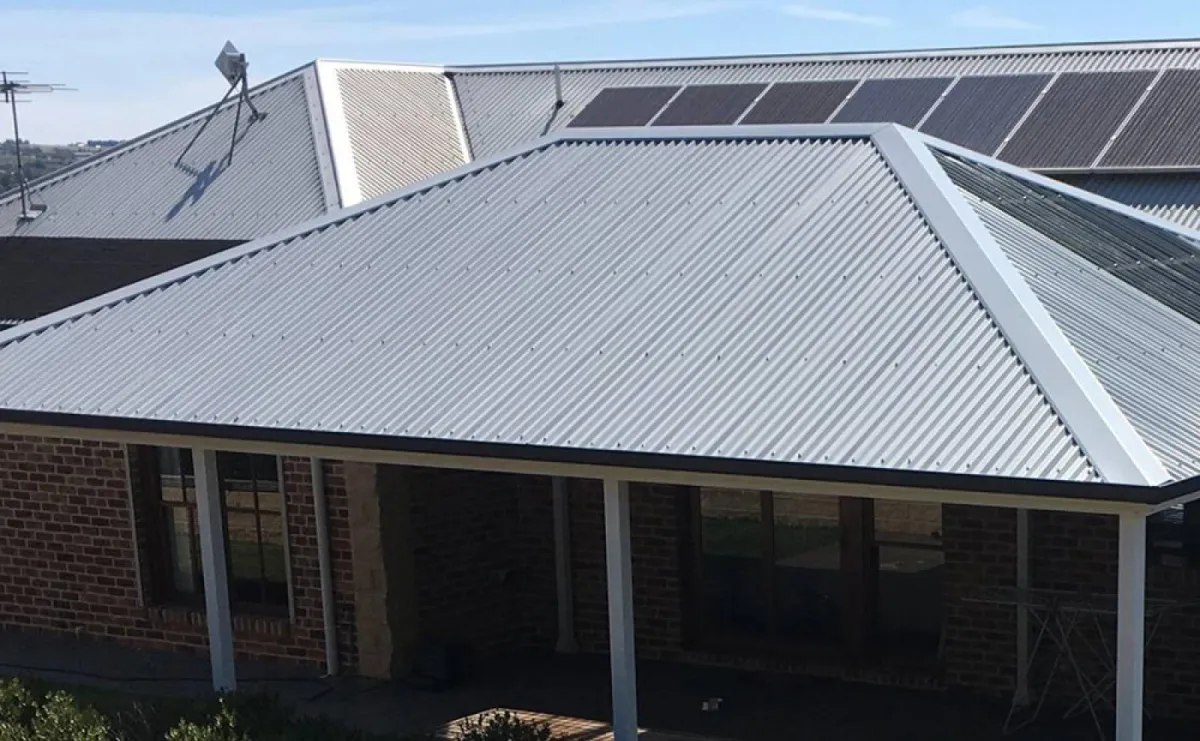What Is a Hip Roof: A Complete Guide to Its Structure and Design

Hip roofs are a popular roofing style that many homeowners choose for their homes. This roofing design features unique characteristics that distinguish it from other roof types. Any leading roofing company will tell you that hip roofs offer excellent benefits for residential construction. These roofs provide superior stability and weather resistance compared to many other roofing options. This guide covers everything you need to know about hip roof structures, including design benefits, key components, popular styles, and maintenance requirements
Understanding Hip Roofs
Hip roofs have slopes on all four sides that meet at the top to form a ridge. This roofing structure is renowned for its stability and longevity, making it a popular choice among homeowners. The four sides of a hip roof slope upward from each wall of the building, creating a uniform angle that comes together at the top ridge. This design helps water drain efficiently and resists wind damage, making hip roofs perfect for areas with heavy rain or strong winds. The slanted sides also create extra living space, such as attics or vaulted ceilings. The balanced and practical design of hip roofs complements many different building styles.
Advantages of Hip Roof Design
Hip roof design offers significant structural benefits, providing superior stability and weather resistance. The symmetrical sloping sides provide excellent protection against wind uplift, making it a top choice in areas with hurricanes or strong winds. The downward slope on all sides helps water drain efficiently, preventing water buildup and reducing the risk of leaks or water damage. Since there are no flat sections, hip roofs avoid the common problem of standing water, which can cause deterioration and mold growth. The evenly spread weight distribution of hip roofs provides a strong load-bearing capacity, ensuring long-term structural strength and reducing the need for expensive repairs.
Key Components of a Hip Roof
A hip roof features four sloping sides that converge at a ridge, forming a pyramid-like structure that provides excellent stability and durability. These sides are called hip rafters and are angled to ensure good water drainage and snow removal. At the top, where the four sides meet, is the ridge board, which provides a secure connection and spreads the weight evenly. Hip roofs also have jack rafters that run from the ridge to the edges, supporting the roof covering. Hip roofs feature a fascia board along the edges, creating a finished appearance and protecting the underlying frame. These parts work together to make hip roofs popular for their strength and attractive look.
Popular Styles of Hip Roofs
Hip roofs are a common feature in many building designs and are characterized by their four sides sloping toward the walls, offering both functional and aesthetic appeal. Several popular hip roof styles are common in construction. The simple hip roof, also known as a pyramid roof, features four equal sides that converge at a single point at the top. A cross-hipped roof features two sections that intersect at right angles, resulting in a more complex design. Mansard hip roofs feature double slopes on all four sides, providing extra living space in the attic. Dutch hip roofs feature a gable with small hips at the top, offering a unique twist on traditional hip roof designs
Maintenance Tips for Hip Roofs
Regular inspection of hip roofs is important to ensure they last long and stay structurally sound. Start by looking for signs of damage, such as missing or cracked shingles, rusted flashing, or sagging areas. Cut back tree branches that hang over the roof to prevent damage from falling limbs. Remove debris, such as leaves and branches, that can accumulate and cause water to pool. Make sure gutters are clean and properly attached to direct water away from the roof. Look for leaks or water stains on the ceiling, which may indicate roof problems. Consider hiring a professional roof inspector every few years to inspect the roof's condition thoroughly. Following these maintenance tips can help extend the life of your hip roof and prevent costly repairs later.
Related Topics:
Our Team

John Doe

John Doe

John Doe

John Doe
Office:
North Carolina
Call:
(704) 769-2468
Email:



